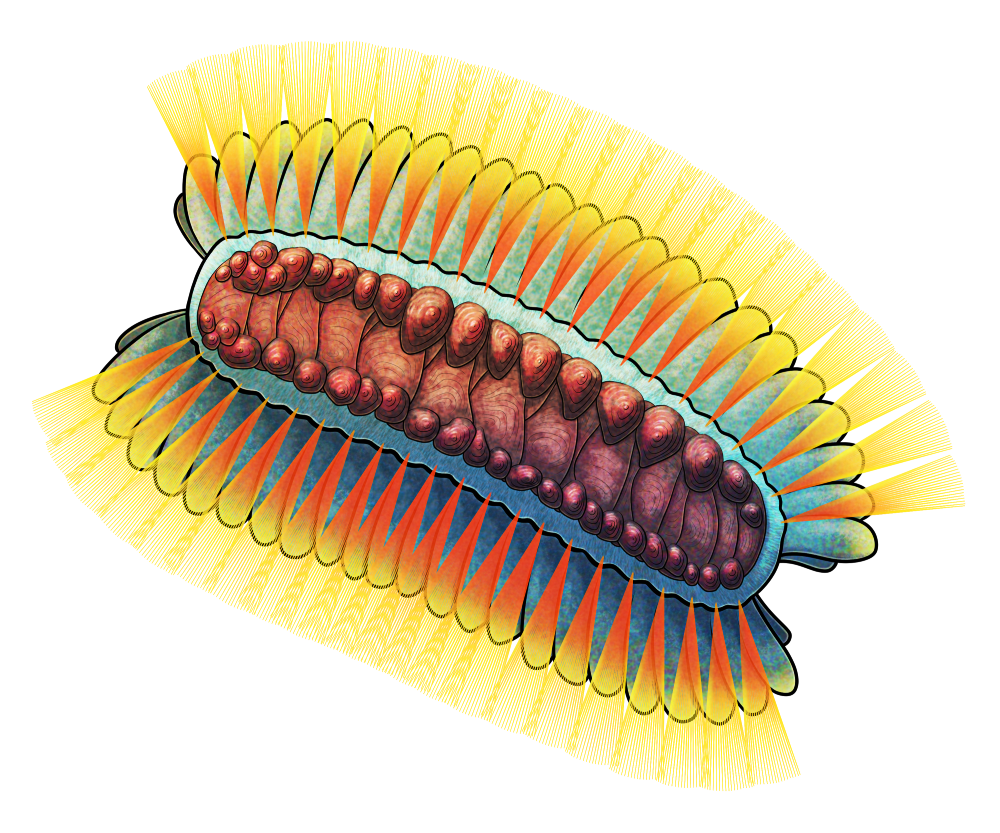Living during the Cambrian Period about 518 million years ago, Wufengella bengtsonii was discovered in the Chinese Chengjiang fossil deposits and was recently named and described in late 2022.
It was a small worm-like animal about 1.6cm long (~0.6″), with bundles of long bristles along its sides and flap-like structures on its underside. Its back was also covered with sclerite armor arranged in a strangely asymmetrical fashion, with larger overlapping plates in the middle and numerous smaller cap-like sclerites distributed unevenly along each side.
Although its bristles and appendages resemble those of annelid worms, the distinctive structure of the sclerites identifies Wufengella as being a member of the tommotiids – early relatives of modern lophophorates (bryozoans, brachiopods, and horseshoe worms).
Its discovery actually confirms an old prediction that lophophorates probably originated from armored worm-like animals, representing an evolutionary link between earlier free-living annelid-like forms and later immobile filter-feeding tommotiids.
It’s not known why the armor on Wufengella‘s back was so unevenly organized – but some of the later tube-like tommotiids also had weird symmetry going on, with forms like Eccentrotheca having irregular sclerites arranged in a spiral around their bodies.

